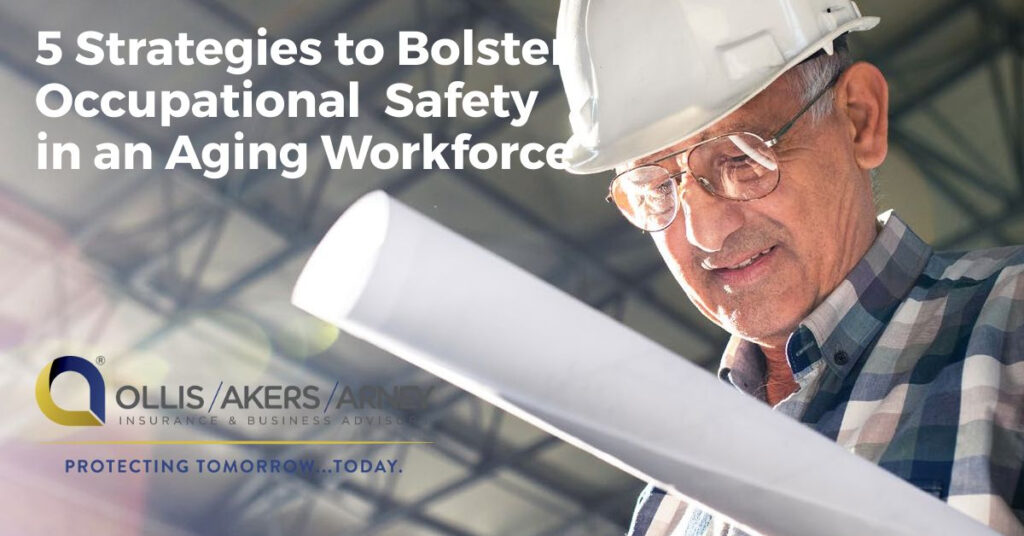As the workforce ages, employers must adapt to ensure the safety and productivity of their older employees. Many baby boomers are delaying retirement or reentering the workforce, so the number of employees aged 55 and older is rising. While these workers bring valuable experience and engagement to their roles, they also face unique safety challenges that require thoughtful management.
Understanding the Risks
Various age-related changes—namely slower reaction times, reduced eyesight and hearing, poor balance and limited flexibility—can increase the risk of injuries on the job, including falls, sprains and strains, and overexertion. Additionally, older employees’ re covery times for occupational ailments are often longer than average due to their low er bone density and weaker immune systems. Such prolonged injuries may negatively impact staff morale and hinder workplace productivity.
Protection Strategies
To better protect their older employees from potential injuries and boost overall work place safety, employers should consider these top five strategies:
- Encourage physical wellness. Employers can promote regular exercise programs to help employees maintain strength, flexibility and balance. A healthier workforce is less likely to experience injuries and more likely to heal quickly upon getting hurt, regardless of age.
- Modify work tasks. To reduce employees’ exposure to repetitive motions, employers should consider rotating job assignments. They should also refrain from having employees engage in tasks that require heavy lifting, long reaches and working from ladders for extended periods. These adjust ments can significantly lower the risk of sprains, strains and overexertion.
- Enhance the work environment. By improving workplace lighting and introducing color contrast to the walls and floors, employers can accom modate employees with declining vision. Installing skid-resistant rugs and maintaining smooth surfaces can also help minimize slips, trips and falls.
- Conduct ergonomic assessments. Employers should utilize occupational safety and health analyses and ergonomic evaluations to identify key job hazards and optimize employees’ individual workstations. These tools can help tailor the work environment to meet the needs of aging employees, reducing the risk of injuries.
- Foster a culture of safety. Employers must ensure that senior leadership visibly supports workplace safety initiatives. They should also encourage older employees to communicate openly about any physical limitations they have and train supervisors to recognize signs of fatigue or perfor mance decline. A proactive, respectful approach can make aging workers feel valued and supported.
By implementing these strategies, employers can create a safer, more inclusive workplace that benefits employees of all ages while leveraging the strengths of an experienced work force. Contact us today for more occupational safety resources.
This document is not intended to be exhaustive, nor should any discussion or opinions be construed as legal advice.
Readers should contact legal counsel or an insurance professional for appropriate advice. ©2025 Zywave, Inc. All rights reserved.


